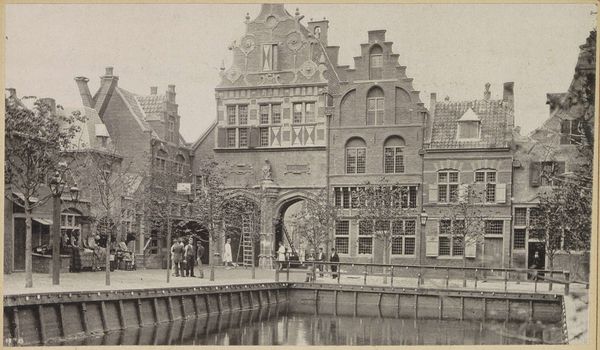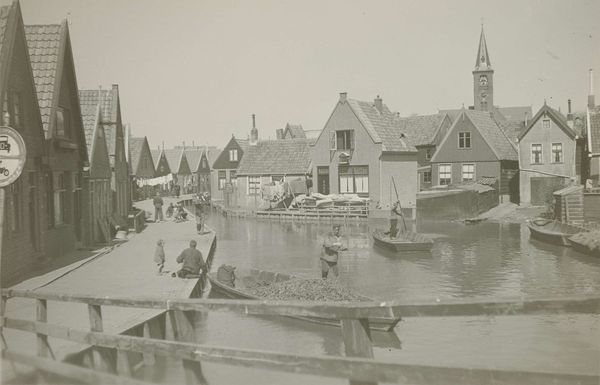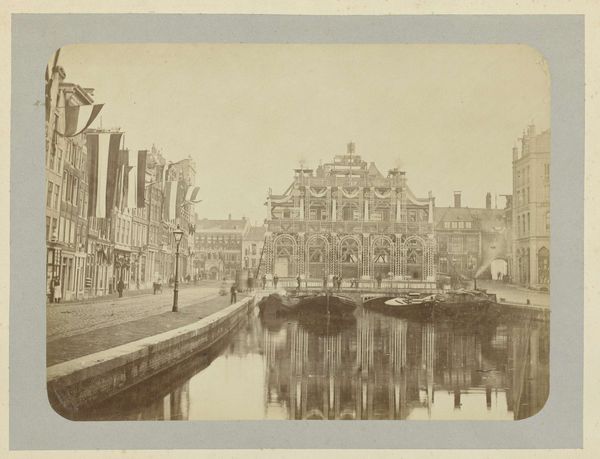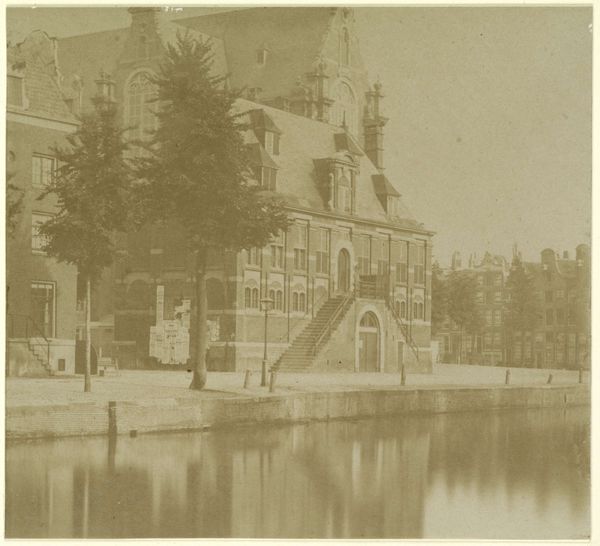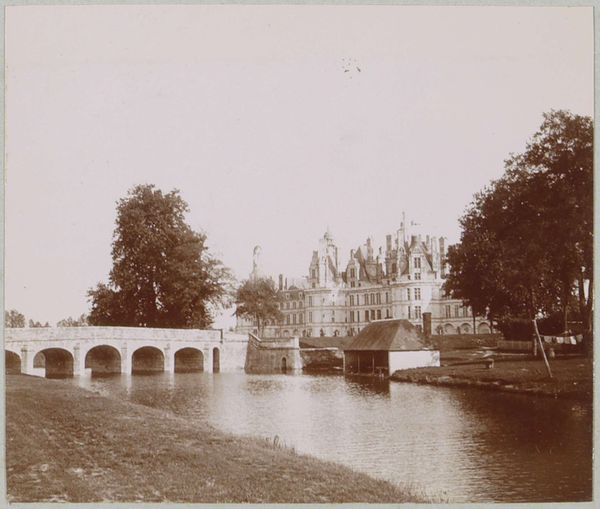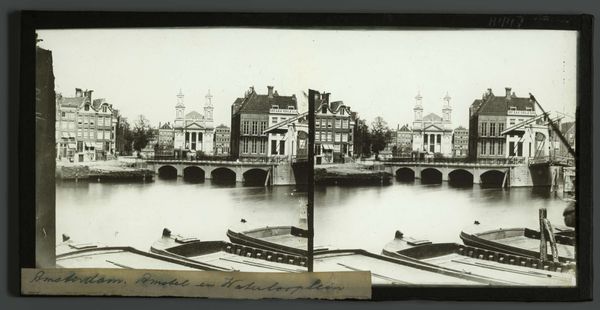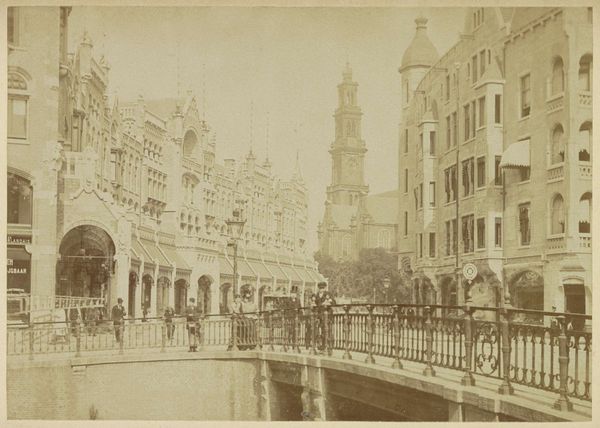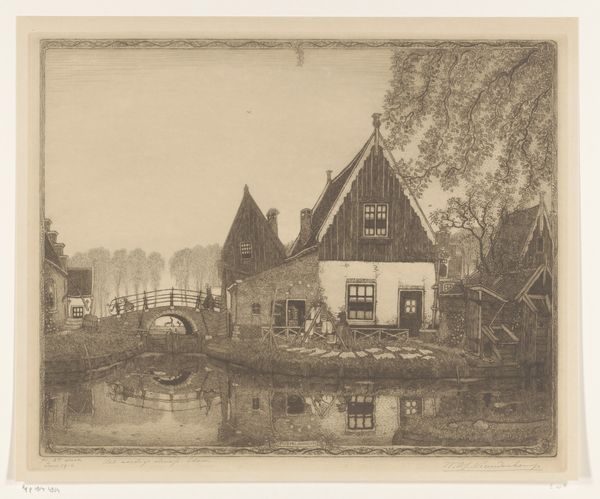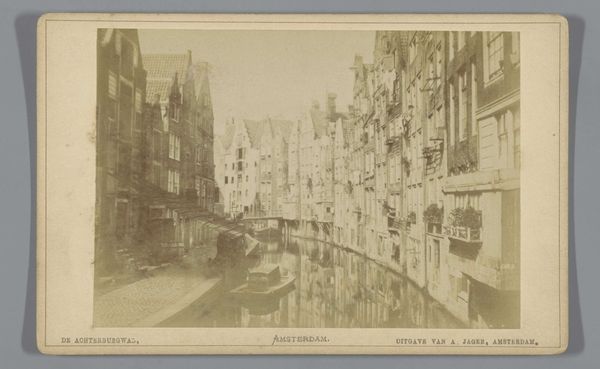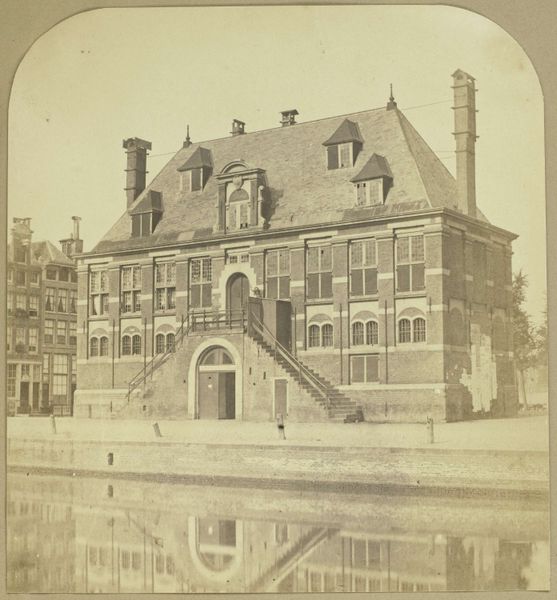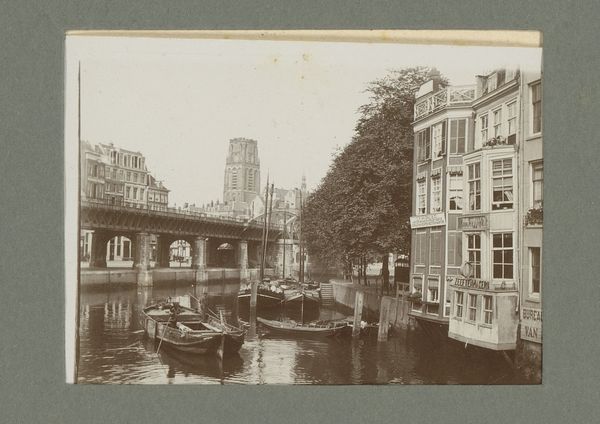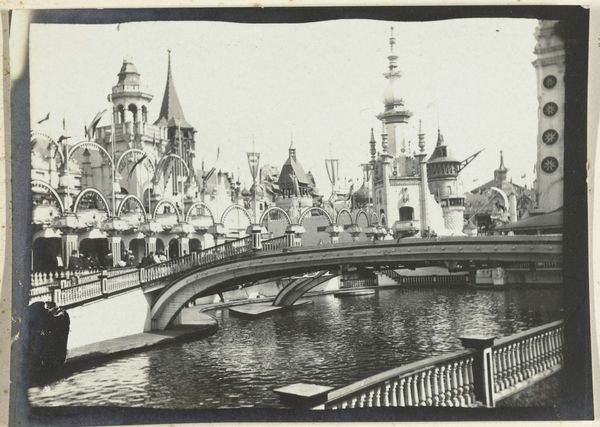
Gracht met oud-Hollandse gevels tijdens de Wereldtentoonstelling voor het Hotel- en Reiswezen op het Museumplein in 1895 1895
0:00
0:00
guydecoralco
Rijksmuseum
print, photography, gelatin-silver-print
#
dutch-golden-age
# print
#
landscape
#
photography
#
orientalism
#
gelatin-silver-print
#
cityscape
#
realism
Dimensions: height 90 mm, width 157 mm
Copyright: Rijks Museum: Open Domain
Editor: So, this gelatin-silver print is by Guy de Coral & Co., taken in 1895. It's titled "Gracht met oud-Hollandse gevels tijdens de Wereldtentoonstelling voor het Hotel- en Reiswezen op het Museumplein in 1895". The architecture feels very staged. What strikes you most about it? Curator: What strikes me is how this image stages a carefully curated sense of Dutch identity for an international audience. It’s not just a depiction of Amsterdam; it’s a performance of Dutchness, built specifically for the World’s Fair. Editor: Performance? That’s interesting, how so? Curator: Think about what the World’s Fair represented at the time: national competition, the display of colonial power, and the construction of cultural narratives. This carefully constructed canal scene, then, participates in that rhetoric, offering a picturesque view that obscures the complex social realities of the era. It glosses over the labor conditions, the class disparities, and the colonial exploitation that fueled this seemingly idyllic world. Doesn't it evoke a specific kind of nostalgia? Editor: I see what you mean! It's like a sanitized version of history meant to impress visitors. So it's less about reflecting reality, and more about promoting a specific image of the Netherlands. How would people at the time have seen this image versus now? Curator: That's a crucial question. To contemporary viewers, familiar with the critiques of such displays, this image reveals the mechanisms of power and representation at play. It reminds us that history is never a neutral account but is always mediated and constructed. It also highlights the ways photography itself participates in shaping perceptions of national identity and cultural heritage. Editor: That’s so much to consider in just one photo. I definitely see this image in a new, more critical light now. Curator: Exactly, understanding the socio-political context allows us to unravel these layers of meaning and engage more critically with both history and photography.
Comments
No comments
Be the first to comment and join the conversation on the ultimate creative platform.

